While previous research has focused on the language used by lawyers, judges, and witnesses in the courtroom, this study specifically examines the language employed by defendants. The study underscores the defendant's employment of similar pragmalinguistic means of persuasion to unveil their intentions and attitudes towards the matter.
The topic covered in the following paper is wide and multidisciplinary, therefore, a macro-approach is applied, taking into account both pragmatics (pragmalinguistics and sociopragmatics) and external elements such as cultural background. The research paper's main objective is to analyze five courtroom speeches that received considerable media attention in the US: the cases of Jodi Ann Arias, Ronnie O’Neal, Kyle Rittenhouse, Ezra McCandless and Skylar Nemetz.
Keywords: discourse analysis, defendants’ speech, court discourse, the American court system, American judicial discourse, pragmalinguistic features.
В то время как предыдущие исследования были сосредоточены на том, как язык используется адвокатами, судьями и прокурорами в зале суда, в данной работе особое внимание уделяется языку, используемому подсудимыми. Исследование подчеркивает использование подсудимыми аналогичных прагмалингвистических средств, которые раскрадывают их намерения и отношению к судебному процессу.
Тема, рассматриваемая в работе, широка и междисциплинарна, поэтому применяется макроподход, учитывающий как прагматику (прагмалингвистику и социопрагматику), так и внешние элементы, такие как культурный фон. Основная задача исследования — проанализировать пять речей подсудимых, которые получили значительную огласку в СМИ США: дела Джоди Энн Ариас, Ронни О’Нила, Кайла Риттенхауса, Эзры МакКэндлесс и Скайлар Немец.
Ключевые слова: дискурс-анализ, речь подсудимых, судебный дискурс, американская судебная система, американский судебный дискурс, прагмалингвистические особенности.
Introduction
Basing on numerous research papers, ‘discourse’ is conceptualized as everything above the level of a sentence. As for the discourse system applied in discourse analysis, it is a ”cultural toolkit” that consists of four elements: ideas and beliefs about the world; conventional ways of treating other people; ways of communication using various kinds of texts; ‘languages’ and methods of learning how to use these tools (Scollon, Scollon & Jones, 2012).
May (2006) states that in linguistics and related fields, pragmatics is the study of how context contributes to meaning. The field of the study evaluates how human language is utilized in social interactions, as well as the relationship between the interpreter and the interpreted. Pragmalinguistics involves analyzing language use in context and how speakers employ language to achieve their communicative goals. Therefore, this paper highlights the importance of using pragmalinguistic analysis when evaluating defendants' statements in court, which could assist in determining an individual's innocence.
In the legal system, judges hold the most significant authority, with prosecutors and defence attorneys wielding influence through their legal expertise. Defendants, on the other hand, have the least amount of power. Despite this, all parties have access to language, which can be a potent tool for persuasion and manipulation. However, one area that has not received much attention is the use of pragmalinguistic features by defendants in constructing their defence.
For instance, Zyubina (2012) touches upon individual and stereotyped speech behaviour of state prosecutors from the point of view of pragmalinguistics, whereas Wright, Robson, Braber (2022) focus on the lawyer-judge interaction. In addition, Balashova, Nagoga, Makshantseva (2022) analyse the legislative genre from the pragmalinguistics point of view.
The main objective of this paper is to explore the pragmalinguistic devices used by defendants in constructing their defence in the American judicial system. This research aims to identify these devices, investigate their usage in forming a defence, and analyze how different factors affect their use. This study's novelty is its focus on the language used by defendants in court, while most previous research concentrated on the language of lawyers, judges, and witnesses.
Chapter 1. Theoretical Framework of Pragmalinguistic Analysis
Speech Act Theory is a fundamental concept within the study of pragmalinguistics, focusing on the performative nature of language. Originated by philosopher Langshaw in his book «How to Do Things with Words» (1962), and further developed by Searle (1969), the theory moved away from the traditional linguistic view of language merely as a means of conveying information or describing the world, positing instead that language also performs actions. Austin initially distinguished between «constative» utterances (statements that could be evaluated as true or false) and «performative» utterances (statements that perform actions). However, he later discarded this dichotomy, suggesting instead that all utterances have a performative dimension to some extent. He introduced a threefold classification of speech acts: Locutionary Acts: This refers to the actual utterance and its ostensible meaning, encompassing the act of saying something. In other words, it refers to the production of sounds, words, and phrases in a particular language, following grammatical and semantic rules. Illocutionary Acts: This refers to the pragmatic «force» of the utterance or the speaker's intention behind the utterance. It is about what the speaker intends to achieve by making the utterance, such as commanding, questioning, promising, or apologising. For example, the utterance «Could you pass the salt?" is not just a question about the listener's ability to pass the salt, but also an indirect request for them to do so. Perlocutionary Acts: This refers to the actual effect or outcome of the utterance on the listener, which may or may not align with the speaker's intent. The perlocutionary act is about the actual or real-world consequences or effects that the utterance has, such as persuading, convincing, scaring, enlightening, inspiring, or otherwise getting someone to do or realise something. Searle (1969) further expanded on Austin's work by classifying illocutionary acts into five categories: assertives (conveying belief about the truth of a proposition, e.g., stating, concluding), directives (trying to make the hearer do something, e.g., ordering, requesting), commissives (committing the speaker to some future course of action, e.g., promising, vowing), expressives (expressing the speaker's feelings or attitudes, e.g., apologising, thanking), and declarations (bringing about immediate changes in the reality, e.g., firing, baptising). Speech Act Theory has profound implications for the understanding of language in social interactions, providing the tools to analyse not just what people say, but what they do with their words. It is particularly relevant in contexts where language is used to command, request, promise, apologise, and perform other social actions.
However, Shevtsova (2014) states that modern pragmalinguistics is not a single trend with clearly defined boundaries, it is understood broadly — as a study of the «behaviour of signs in real communication processes».
Methods
To address the research questions and achieve the stated objectives, this study employs a case study method. The research focuses on analysing various murder cases and the statements made by defendants in the American judicial system. By examining these real-life courtroom scenarios, the study aims to gain insights into the pragmatic devices employed by defendants in constructing their defences. The case study approach allows for an in-depth exploration of the language used by defendants, providing rich and detailed data for analysis. The study considers a range of murder cases to ensure diversity and capture different contexts, strategies, and outcomes. By examining multiple cases, the research can identify patterns and common pragmalinguistic devicesused by defendants in their speeches. The study also employs critical discourse analysis. Through the critical discourse analysis of the defendant's statements, the study aims to uncover the lexical, grammatical, and phonetic peculiarities that can be exploited to the defence's advantage. It also seeks to analyse the pragmalinguistic strategies employed by defendants to create their defence. The case method allows for a comprehensive examination of the language used by defendants, providing insights into their intentions, emotions, and attitudes toward the case. Moreover, these features may reflect their mood, attitude, and goals, shedding light on their persuasive strategies and communicative objectives. By conducting a thorough analysis of the defendants' language use in the courtroom, the study may contribute to the understanding of how pragmalinguistic features are employed by defendants in constructing their defence in the American judicial system. Since the defendants analysed in this study were not deemed mentally incompetent by the court, there is no need for any psycholinguistic analysis.
Chapter 2. Practical Aspects of Pragmalinguistic Analysis in Judicial Discourse Cases
The paper now will be proceeding with discussing, in addition to comparing the findings that the analysis showed, as well as answering the questions the paper is aimed at answering. Due to five analysed cases of Jodi Ann Arias, Ronnie O’Neal, Kyle Rittenhouse, Ezra McCandless and Skylar Nemetz common rhetorical features could be noticed. The analysis seems to reveal that Jodi’s and Ezra’s pragmalinguistic objective is to put pressure on pity while the pragmalinguistic objective of Ronnie O’neal, Kyle Ritterhouse and Skylar Nemetz is to create their defence to prove their innocence. The results are the following:
In terms, all of the defendants tend to express ideas with composite sentences and make the points with simple ones. In the case of Ritterhouse, McCandless and Nemetz, they tend to use simple sentences more to answer the prosecutor’s questions fast and clearly. (fig. 1 )
—Jodi Ann Arias's speech consists of 3040 words , 172 sentences , 99 of them are composite sentences, 73 of them are simple ones;
—Ronnie O’Neal’s speech consists of 2258 words, 79 sentences , 65 of them are composite , whereas only 14 of them are simple ones ;
—Kyle Ritterhouse’s consists of 1310 words , 147 sentences , 48 of them are composite sentences, 99 of them are simple ones;
—Ezra McCandless’s speech consists of 1304 words , 79 sentences , 26 of them are composite sentences, 54 of them are simple ones (short answers to the prosecutor’s questions);
—Skylar Nemetz’s speech consists of 802 words , 41 sentences , 21 of them are composite sentences, 20 of them are simple ones;
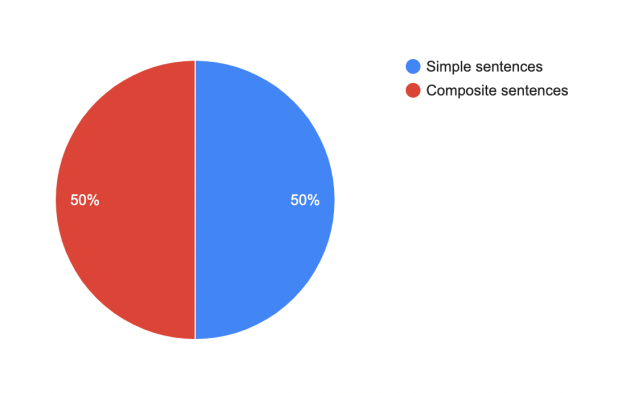
Fig. 1. The usage of linkers in defendants’ speeches
In addition, the defendants tend to make their speech cohesive with the help of linkers in order to make it appealing and more clear to the listeners. (fig. 2)

Fig. 2. The usage of linkers in defendants’ speeches
The usage of conditionals in all of the defendants' statements could be also noticed. However, it may be highlighted that Jodi Ann Aries and Ezra McCandless use them to express their regrets, while Ronnie O’neal, Kyle Rittherhouse and Skylar Nemetz employ them to create arguments expressing unreal actions.
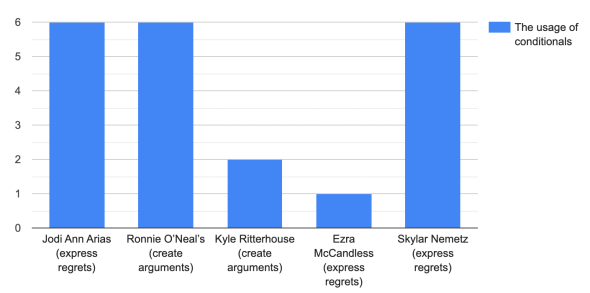
Fig. 3. The usage of conditionals in defendants’ speeches
Moreover, the common grammatical feature that may be embraced is the use of modal verbs, particularly ‘can’ and ‘would’.
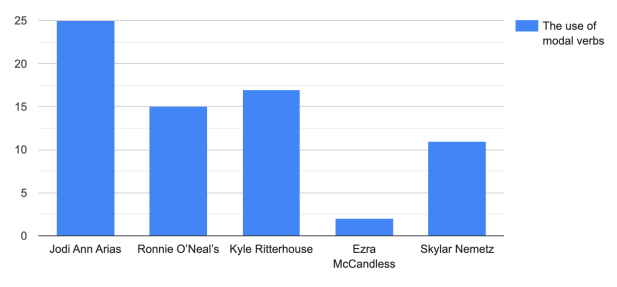
Fig.4. The usage of modal verbs in defendants’ speeches
While ‘can’ adds more confidence either in statements or questions the defendants ask, ‘would’ is used to express the unreal actions.
Moreover, it could be mentioned that the speech of Jodi Ann Arias and Ezra McCandless, who appears to have the same pragmalinguistic purpose — arousing empathy, tend to self-centralise their statements. This could be seen by the overuse of self-centred pronouns ( I, me, my, myself ) in their statements.
Jodie Ann Arias: 216
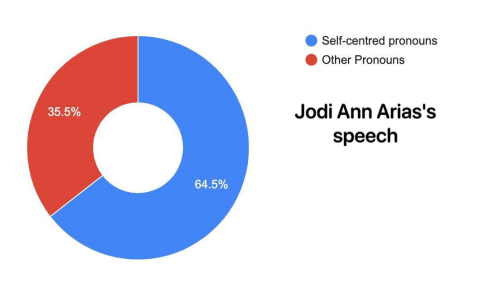
Fig. 5. The usage of self-centred pronouns in Jodie Ann Arias’s speeches
Ezra McCandless: 83
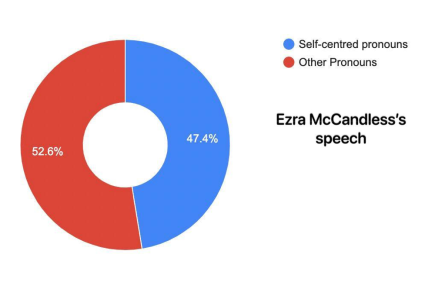
Fig. 6. The usage of self-centred pronouns in Ezra McCandless’s speeches
In terms of lexical devices the common ones also could be found, which are: anaphora, metaphors, epithets and periphrases .
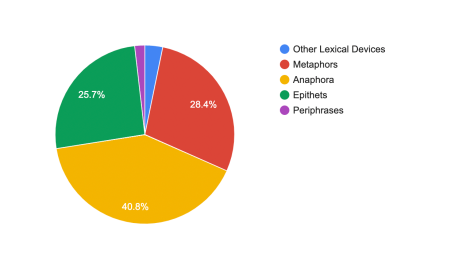
Fig. 7. The usage of lexical devices: metaphors, anaphora, epithets, periphrases and other lexical devices in defendants’ speeches
Moreover, the emotive charge of the words ‘family’, ‘motherhood’, ‘suicide’, ‘authority’, ‘God’, ‘rifle’, ‘people’, ‘identity’, ‘cannibalism’, ‘weapon’, ‘detectives’ with the help of semantic differential technique was highlighted to reveal inner attitudes and emotions of the defendant related to the matter.
In terms of phonetics, non-final low fall is a common pattern that is employed in all of the defendants' speeches except Ronnie O’neals one. While all of the others seem to show their state of anxiety with law fall, Ronnie O’Neal seems to choose accidental rise and screaming trying to dominate the courtroom. However, accidental rise and almost yelling in his statement may indicate his high level of anxiety, despite his probable endeavour to dominate in the courtroom by almost screaming. Moreover, Jodi, Ezra and Skylar tend to use low rise which may indicate their endeavour to influence listeners' perceptions. In terms of pauses, emphatic and hesitation pauses are the most often to be employed. While hesitation pauses appear to be natural in the flow of speech, emphatic pauses, which could be mostly noticed in Ronnie’s and Jodi’s speech, seem to help attract the attention of the listeners. However, the overuse of them in Ronnie O’Neal’s speech tends to make his speech seem unprofessional and rather emotional, thus, less appealing to the jury.
Jodie Ann Arias : Emphatic pause — 9, hesitation pause — 9
Ronnie O’Neal : Emphatic pause 33, hesitation pause — 10
Kyle Ritterhouse : Emphatic pause — 0, hesitation pause — 11
Ezra McCandless : Emphatic pause — 1, hesitation pause — 0
Skylar Nemetz : Emphatic pause — 1, hesitation pause — 6

Fig. 8. The usage of emphatic and hesitation pauses in defendatns’ speeches
Basing on the analysis of the context of each case, the following pragmalinguistic purposes of a statement were revealed: to create a strong defence and to put pressure on pity. While Jodi Ann Aries and Ezra McCandless aimed to arouse empathy with their statements, Ronnie O’neal, Kyle Ritterhouse and Scylar Nemetz tend to create strong defences in order to prove their innocence.
Conclusion
In conclusion, it should be pointed out that the findings of the research helped to answer the research questions, achieve the research goal, and complete the research objectives. The pragmalinguistic devices that are used by the defendants for the benefit of their pragmalinguistic objective could be summarized as follows:
Grammatical devices:
—The prevalence of the composite sentences;
—The use of conditionals;
—Modal verbs;
—Over usage of self-centred pronouns;
Lexical Devices Analysis
—Metaphors;
—Anaphora;
—Epithets;
—Rhetoric questions;
—Antithesis;
—Quotations;
—Periphrases;
Phonetic devices
—Non-final low fall that seem to indicate the state of anxiety and lack of air;
—Low fall that seem to indicate the determination and confidence;
—Low rise that seem to indicate the desire to influence a listener’s perception;
—Accidental low rise that may indicate a nervous emotional state;
—Emphatic pauses to catch the attention on the point;
—Hesitation pauses
All of the aforementioned peculiarities pointed out earlier are examples of pragmalinguistic devices utilized by the defendants to achieve their pragmalinguistic objectives. It may be concluded that pragmalinguistics is unavoidable when conveying ideas. Having analysed the speeches, it appears that common pragmalinguistic devices could be highlighted in defendants’ speeches, despite them having different attitudes to the matter.
The study concludes that the defendants employ similar pragmalinguistic means of persuasion and furthermore suggests that examining these linguistic devices can unveil their intentions and attitudes towards the matter. Pragmalinguistic devices potentially serve as a key element in comprehending a defendant's communication strategy. Although this research is limited to five case studies, its conceptual framework can be applied to analyze and compare various cases, as well as facilitate future research focusing on social issues unrelated to judicial discourse.
References:
- Austin, J. L. (1975). How to do things with words. Oxford university press.
- Balashova, E. Y., Nagoga, O. V. & Makshantseva, E. A. (2022). Pragmalinguistic Analysis Of Legislative Discourse (On The Basis Of German Laws). European Proceedings of Social and Behavioural Sciences.
- Mey, J. L. (2006). Pragmatics: overview. Concise Encyclopedia of Pragmatics, 786–797.
- Scollon, R., Scollon, S.W. & Jones, R.H. (2012). Intercultural Communication: A Discourse Approach. 3rd ed. John Wiley & Sons.
- Searle, J. R. (1969). Speech acts: An essay in the philosophy of language. Cambridge university press.
- Shevtsova V.M (2014). Pragmalinguistics: origins, objectives and prospects. Bseu
- Wright D., Robson J., Braber N. (2022) The pragmatic functions of ‘respect’ in lawyers' courtroom discourse: A case study of Brexit hearings. Journal of Pragmatics, 187, 1–12.
- Zyubina, I. (2012). Individual and stereotyped speech behaviour of prosecutors from the point of view of pragmalinguistics: dis. Associate Professor, Ph.D, Rostov-on-Don.







